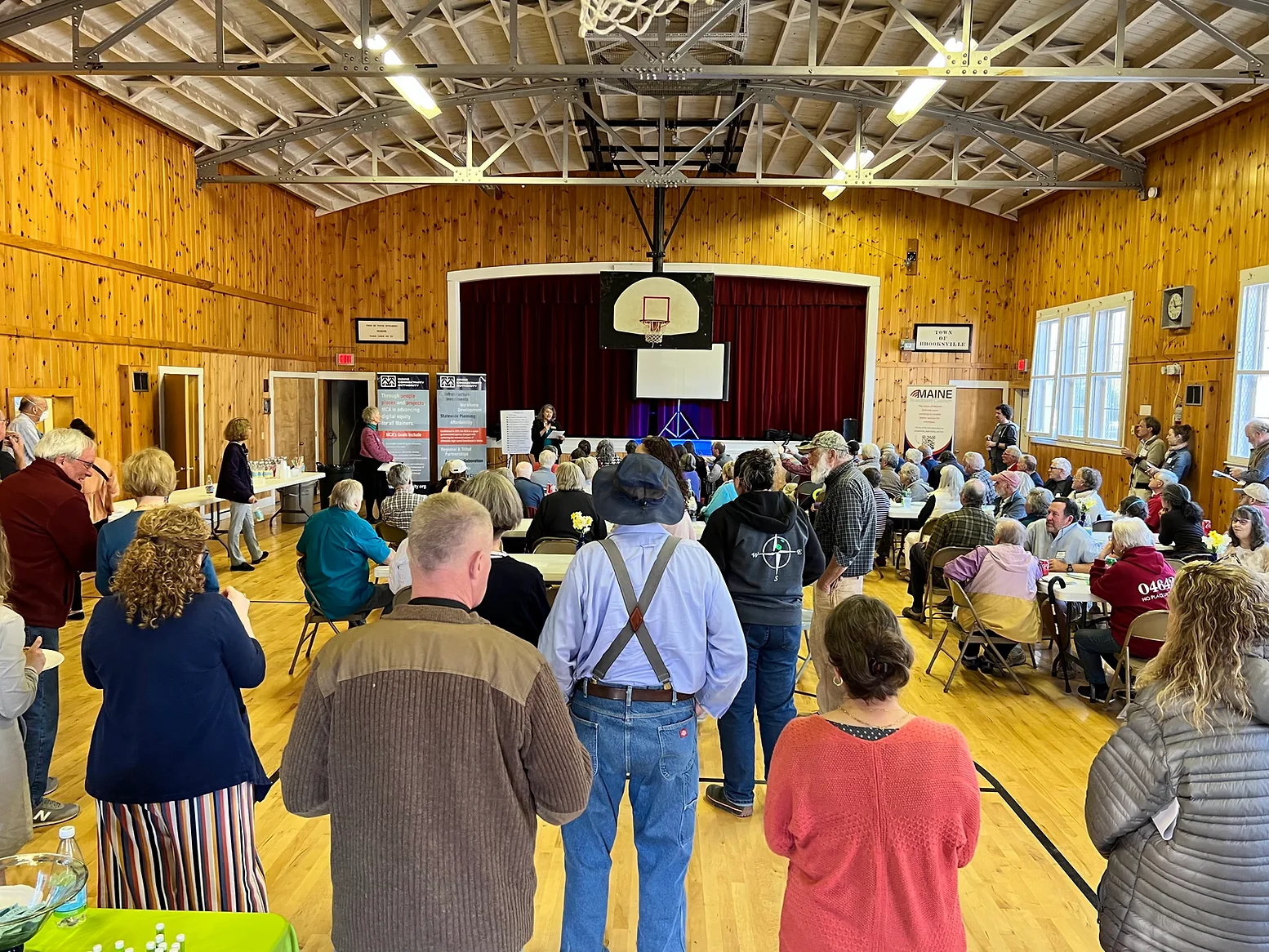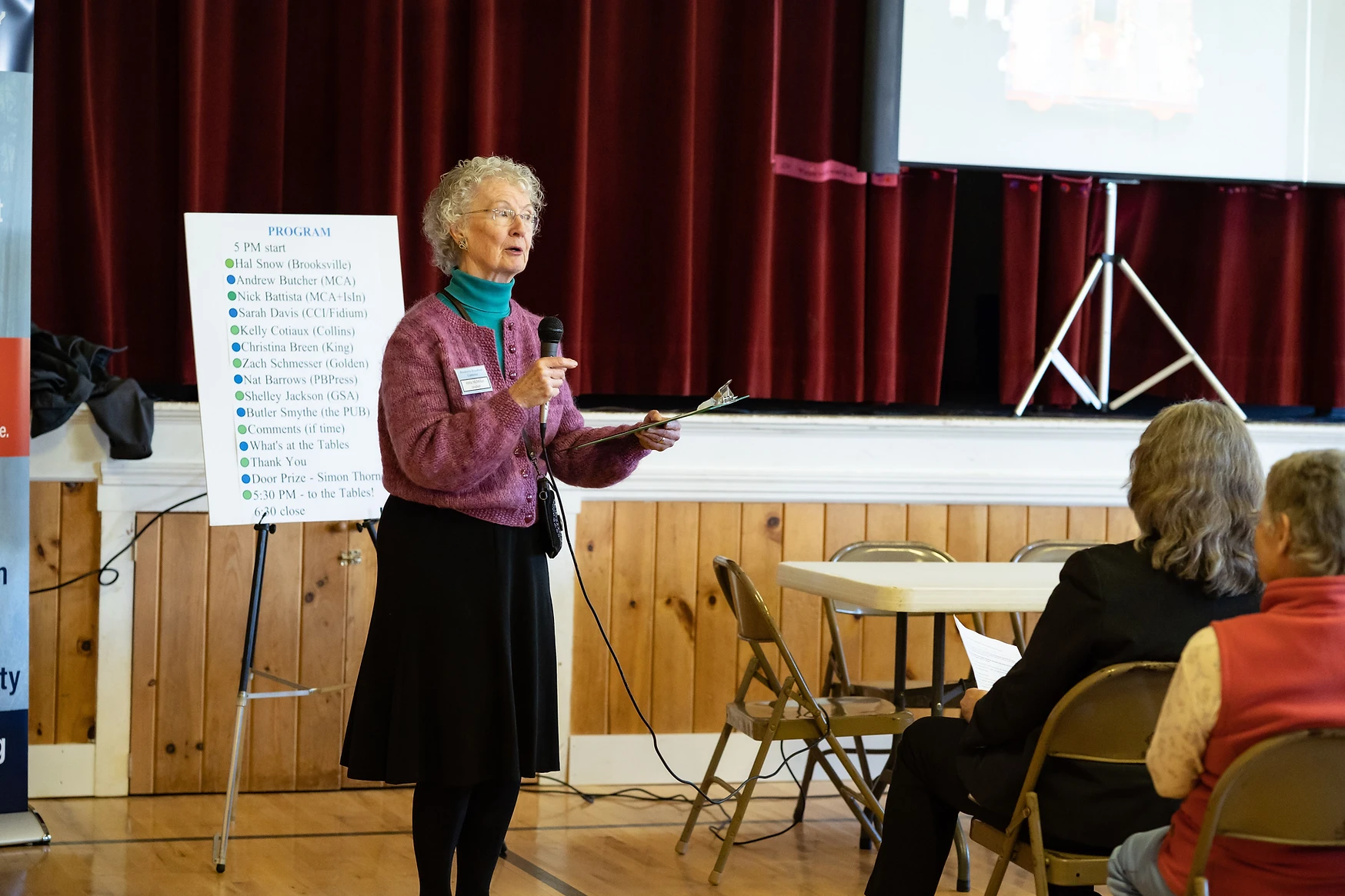Broadband For All On The Blue Hill Peninsula
- Maine Broadband Coalition

- Jun 12, 2023
- 7 min read
Updated: Jun 12, 2023
By Joe Oliva, Butler Smythe, and Abbie McMillen
“Brooksville! Today is the day you've been waiting for. You can finally sign up for Fidium Fiber internet” the top of Brooksville’s broadband committee website reads in bold letters. For those in Brooksville and in neighboring towns on the Blue Hill Peninsula, the arrival of high-speed broadband infrastructure has been a long time coming.

Early Days
The push for broadband expansion can be traced back to 2018, when Butler Smythe and Joel Katz from Blue Hill and Penobscot formed a group called Peninsula Utility for Broadband (PUB) in the wake of a Maine Broadband Coalition event. Like many folks who were involved with community-level planning at that time, questions far outnumbered answers – but this group saw what the towns of Calais and Baileyville had created in the Downeast Broadband Utility (DBU) and spotted an opportunity to follow a similar path.
To understand how community-driven broadband planning was approached before COVID and new government investment in broadband, it’s important to take a closer look at DBU as an example of how rural communities addressed a problem that the traditional market-driven broadband expansion model couldn’t or wouldn’t solve. As the DSL technology in Calais and Baileyville fell further and further behind the rest of the state, it was abundantly clear that their incumbent provider had no interest in upgrading its footprint. At that time both communities understood that they didn’t have enough unserved locations to compete for the limited government funding available in the state – basically, they’d have to get creative in order to muscle a project forward.
So they did – first by teaming up with each other through an interlocal agreement to form the first ever broadband utility district in the state, then by turning to a local bank to secure enough funding to cover construction costs. Both Calais and Baileyville had to, in turn, go to their residents in a town vote to accept the debt – debt that DBU would pay back out of subscriber fees so as not to directly impact either town’s tax base. DBU proceeded to partner with Pioneer Broadband, a Maine-based ISP based out of Houlton, to build the dark-fiber network. Their project was made possible by a loan guarantee from the two towns and a local bank that was willing to play ball.
When PUB got together on the Blue Hill Peninsula, they saw themselves in a similar position as the constituent towns of DBU: likely not unserved enough to win grant dollars and without the population size or density to attract private investment as individual municipalities. Their way forward was through regional collaboration and scrappy, creative thinking.
The group was formed between seven town groups almost immediately - Blue Hill, Brooklin, Brooksville, Deer Isle, Penobscot, Sedgwick, and Stonington – with discussion, presentations and, inevitably, twists and turns, with some splintering off or severing ties with the group. Unlike the towns of Calais and Baileyville in the Downeast, the towns on the peninsula – as municipalities – never directly got involved with the planning process.
To secure the type of financing that DBU had to form their utility district, municipalities on the Blue Hill Peninsula needed to be involved – but according to those who were organizing planning around broadband in the area, there wasn’t much appetite for municipal involvement at the time in certain towns on the peninsula.
Though there was a modest amount of money available for grants through the ConnectMaine Authority at the state level, back of the envelope math showed that whatever PUB could attract from that body likely wouldn’t cover the scope of the project they wanted. In the Fall of 2018, PUB and Great Works Internet (GWI) began working together on an application to the USDA. However, turning to the federal government for funding – particularly the USDA – presented its own set problems. In 2018 and 2019, a host of communities in Maine applied for and failed to win awards from the USDA, PUB included. GWI tried again, having to compress their effort to only those areas without Rural Digital Opportunity Fund (RDOF) commitments. They were again shut out.
Pushing Forward
So what happens when the problem is big and there’s not enough funding to fix it? As a colleague says, “When there isn’t enough money, you get really good at planning.” PUB volunteers stayed engaged with their respective communities and with the planning process writ large despite lacking a clear sense of when and how this project could be completed.
In the spring of 2021 two of the original towns dropped from the group and Stonington had gotten a partial fiber commitment through a separate Consolidated Communications effort. At that point PUB consisted of four towns: Blue Hill, Penobscot, Brooksville, and Deer Isle. The group coalesced quickly, gained town government commitment and went down the Request for Proposal (RFP) path. In their planning process, PUB established a set of goals that would guide their planning, assessment, and decision-making. Any solution worth consideration must be (1) fiber-based, (2) ubiquitous, have (3) gigabit capacity and (4) symmetrical speeds, (5) without data caps or throttling at (6) modest and fair installation costs, and (7) maintain the collaborative effort of the four towns.
The group put out an RFP in July 2021 to nine internet service providers. They assessed responses against the seven goals above and intentionally omitted any preference for the type of ownership model the group was looking for, as per their January 2021 Joint Status Report, “[t]he Town Committees did not want to narrow the range of possible ownership structures until more specific information was available relative to each respondent’s preferred proposal.” Butler Smythe, of Blue Hill, noted that, “because we weren’t tied to an ownership model, that allowed ISPs like Spectrum and Consolidated to bid on it. We could pick or choose what the best project was for our town both technologically and financially”.
Of the nine ISPs that received the RFP, six responded. The towns created a matrix (below) which they used to track how each response addressed the group’s goals.

The choice was clear. Consolidated Communications’ proposal met all of the goals, and offered subscribers the lowest prices. By the time that PUB published its joint status report, there was still uncertainty about where the money would come from to help subsidize the build. The next steps for the group would include signing interlocal agreement – formalizing the four town group at the municipal level – along with continued community engagement.
Concurrently, while PUB went through their RFP process, another effort was brewing at the state level. The ConnectMaine Authority had identified and applied for a grant opportunity through the National Telecommunications and Information Administration (NTIA) that would cover the four PUB towns along with Sedgwick, Brooklin, Castine, and a portion of Stonington not completed by the separate effort. Though communities themselves couldn’t apply for this funding, the state agency was more than happy to apply on behalf of the Blue Hill Peninsula – a primary reason being the continued community engagement around broadband over the course of multiple years and written support received for the effort.
One sterling example of community involvement in the state’s grant application came when Spectrum, an incumbent provider in the area, challenged that they served almost every location on Deer Isle with speeds that would have disqualified those locations from being included in any grant award – though the reality was, they didn’t. Given the timing of Spectrum’s challenge relative to when the grant decision was to be made, ConnectMaine learned that they had about one week to counter Spectrum’s claim.

When Deer Isle’s Town Manager was alerted of this news, the town’s Facebook page put out a call to residents to verify whether or not they had access to the service that Spectrum claimed they did. Over the course of 24 hours – the amount of time the town had to turn around whatever information they could to the state – the Town Manager received over 80 emails from residents that exposed the glaring absence of coverage that Spectrum claimed they delivered.
NTIA announced in February 2022 that ConnectMaine had won an award for a collection of projects in the state – the Blue Hill Peninsula included. For the first time in almost half a decade, there was clarity about how and when this project would be completed. ConnectMaine had partnered with Consolidated Communications to build a fiber network to be available to every location in all of the original PUB towns and Castine who had never joined that group. Now the network is fully built and everyday more residents are getting connected.
Abbie McMillen, a community leader from Brooksville, remarked that, “Without a subsidy from the state and federal government, we would have had a very difficult financing problem. The subsidy from NTIA and some additional funding by Consolidated Communications resulted in our preferred solution – a solution that did not require the towns to take on debt.”
Flowers for the Blue Hill Peninsula
So what can be learned from the long and winding journey that the Blue Hill Peninsula took to where they are now?
On one reading, their success can be boiled down to being in the right place at the right time – but that would be a vast oversimplification and underestimation of the time and effort that dedicated volunteers from these towns carved out of their lives for the better part of a decade.
Instead, the Blue Hill Peninsula’s story must begin and end with the persistence, diligence, and willingness to stay engaged with their project despite the sea of uncertainty they swam in. When roadblocks were confronted at a number of points, the volunteers that muscled this project forward could have been put off or capitulated to the notion that the project they collectively envisioned wasn’t in the cards – but they didn’t fold. They kept busy by driving roads to figure out where exactly infrastructure was and wasn’t, pushed out newsletters, emails and even more information on their PUB website, while reaching out through their local papers and making sure to stay connected to the larger broadband information network in the state.
What came out of their work wasn’t just a full-fiber network, but an entire ecosystem of people, organizations, and information pathways that are ready for whatever challenges come along with adoption and digital equity. Building a broadband network is necessary but insufficient for closing the digital divide on its own – the transformational promise of broadband access in towns across Maine can only be fulfilled through community-level leadership and engagement from day one. Though the job isn’t yet done, the communities on the Blue Hill Peninsula have the tools they need to make sure every resident is aware of the available resources and opportunities to take full advantage of their network for years to come.
For more information about the project, including meeting minutes and other supporting documents, check out these links:
Peninsula Utility for Broadband: http://www.pubfiber.org/
Brooksville Broadband: https://www.brooksvillemaine.org/brooksville-broadband
Community Conversations Podcast: https://soundcloud.com/mainebroadbandcoalition/butler-smythe
Brooksville celebration story (PenBay Pilot): https://weeklypacket.com/news/2023/may/19/broadband-celebration-draws-a-crowd/





